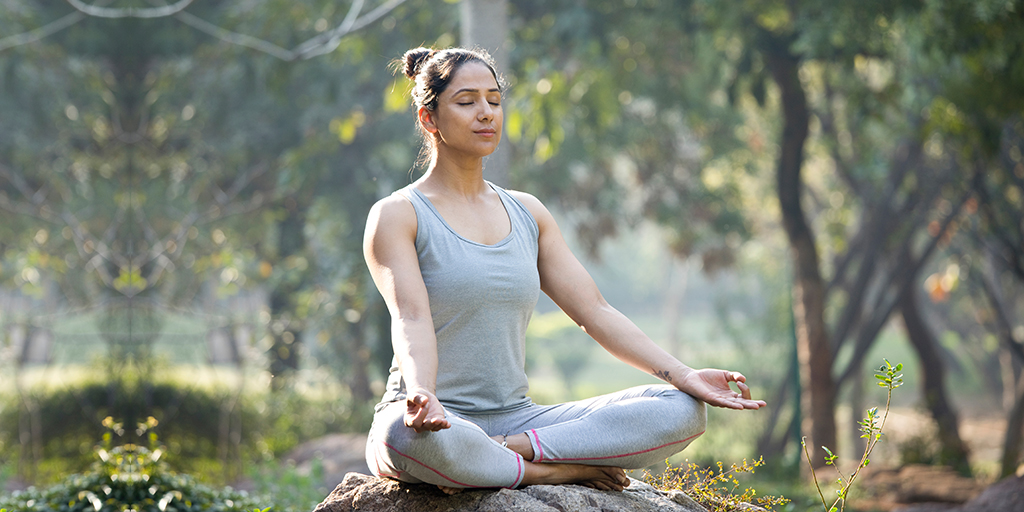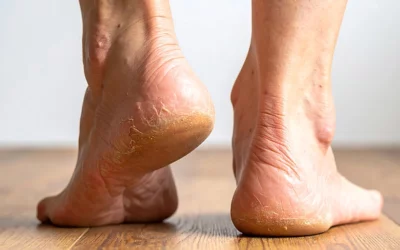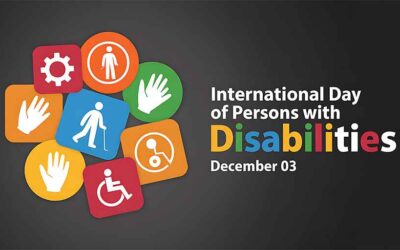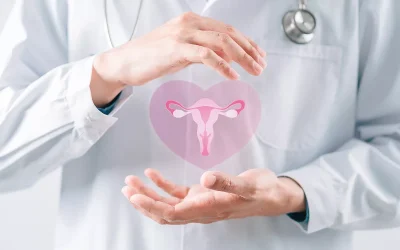International Yoga Day 2025: Exploring the Transformative Power of Yoga

Yoga, an ancient technique developed by Indian sages, goes beyond regular exercise by combining movement, breathing, and focus to support both physical and mental well-being. International Yoga Day is observed every year on 21st June, to serve as a reminder of the role yoga can play in modern lifestyles. From helping improve flexibility and strength to easing stress and supporting better sleep, yoga offers a gentle yet effective approach to holistic health. That’s why it is gaining popularity in medical settings too, where it is used alongside treatment plans for certain conditions. In this blog, we look at how yoga supports different aspects of health, its role in recovery, beginner-friendly poses, and simple ways you can take part in International Yoga Day this year. But first, let’s take a quick look at the history of International Yoga Day.
Table of Contents
ToggleThe History of International Yoga Day
International Yoga Day was first proposed by India’s Prime Minister, Narendra Modi, during his speech at the United Nations General Assembly in 2014. He spoke about the many benefits of yoga and suggested dedicating a day to its practice around the world. The idea received strong support, and soon after, 21st June was officially declared as International Yoga Day by the United Nations.
The date was chosen because it marks the summer solstice, the longest day of the year in the Northern Hemisphere. In many cultures, this day holds special meaning, and in yoga, it is seen as a time of energy and change.
Since the first celebration in 2015, people across the world have taken part through group sessions, public events, and online classes. The aim is to raise awareness about the importance of yoga and to encourage more people to make it part of their daily lives.
International Yoga Day 2025 Theme
This year marks the 11th International Yoga Day, celebrated on 21st June 2025, under the theme “Yoga for One Earth, One Health”. The focus embraces the connection between human well-being and a healthier planet. It encourages us to recognise that when our bodies and minds are well, we are better able to support the health of our communities and environment.
Across India, the theme has inspired meaningful action: in Mandya, a local health drive hosted both yoga sessions and tree-planting as part of a Green Yoga initiative. This combined approach highlights how caring for ourselves and caring for the environment go together
At the same time, the state of Uttar Pradesh has instructed all government hospitals and primary health centres to hold observances on this theme, underlining the growing importance of yoga in public health settings.
Physical Health Benefits of Yoga
Yoga can support overall physical health in many ways, making it a suitable form of movement for people of different age groups and fitness levels. Unlike intense workouts, yoga focuses on slow, controlled movements that are gentle on the body but still effective in building strength and flexibility.
Some of the key physical health benefits of regular yoga practice include:
- Improved flexibility: Yoga involves stretching the muscles in a safe and gradual way, which helps reduce stiffness and increase range of motion.
- Better posture: Many yoga poses focus on alignment, which strengthens the core and back muscles. This can improve posture and reduce strain on the spine.
- Stronger muscles and joints: Holding certain poses builds muscle strength, which supports joint health and helps reduce the risk of injuries.
- Improved balance and coordination: Yoga trains the body to stay steady and balanced, which becomes especially important as we age.
- Support for heart health: Some studies suggest that yoga may help lower blood pressure and support better circulation when practised regularly.
- Better breathing: Breathing exercises used in yoga, known as pranayama, can improve lung capacity and help manage breathing-related issues such as asthma.
- Relief from aches and tension: Gentle stretches and movements in yoga can ease tension in the neck, shoulders, back, and legs, especially for those with desk-based jobs.
Yoga is also helpful during recovery from illness or injury. Because it can be easily adapted, it is often included in physiotherapy or rehabilitation programmes, helping the body heal without putting too much strain on it.
Mental Health Benefits of Yoga
Yoga can be a helpful tool for supporting mental well-being, especially when practised regularly. Many people find that even a short daily routine helps them feel more balanced and in control.
Some of the key mental health benefits of yoga include:
- Reduced stress: Yoga helps lower levels of cortisol, the stress hormone. Slow, controlled breathing and gentle movements encourage the body to relax, making it easier to manage daily pressures.
- Improved mood: Regular yoga has been linked to increased levels of serotonin, a chemical in the brain that affects mood. It may also help reduce feelings of sadness or emotional fatigue.
- Better sleep: By helping the body wind down and release tension, yoga can make it easier to fall asleep and improve sleep quality over time.
- Increased focus and clarity: Yoga encourages you to stay present in the moment. This can improve concentration and reduce mental clutter or overthinking.
- Emotional balance: With continued practice, many people notice they feel less reactive, more patient, and better able to manage emotional ups and downs.
Yoga is also gaining attention for its use in mental health care. It has been studied as part of supportive therapy for people living with anxiety, depression, and post-traumatic stress. Although it is not a replacement for medical care or counselling, yoga can work well alongside treatment, especially when guided by a healthcare professional.
For those dealing with chronic stress or emotional exhaustion, yoga offers a way to slow down, reconnect with the body, and build mental resilience over time.
Yoga as a Part of Recovery or Rehabilitation Plan
Yoga is increasingly being used in recovery and rehabilitation settings because of its gentle, adaptable nature. In hospitals and physiotherapy centres, certain yoga-based practices are included in treatment plans to support healing, restore movement, and reduce the mental stress that often follows illness, injury, or surgery.
Yoga is not used as a cure on its own but as a supportive part of recovery under professional guidance. Healthcare teams, including doctors and physiotherapists, may suggest simple postures, breathing techniques, or relaxation exercises that are suited to a person’s condition and physical ability.
Some examples where yoga may be helpful in rehabilitation include:
- After orthopaedic surgery, such as knee or hip replacement, where yoga helps rebuild strength, flexibility, and balance without high-impact movement
- In stroke recovery, where gentle movements can assist with regaining coordination, improving posture, and rebuilding motor control
- Following long periods of bed rest or illness, to improve circulation, muscle tone, and general body awareness
- As part of pain management for people with lower back pain, frozen shoulder, or arthritis, where controlled movement and stretching can relieve stiffness
- In cancer recovery, where fatigue, limited mobility, and anxiety are common, yoga may help reduce discomfort and support emotional well-being
- Postnatal rehabilitation, where yoga can aid in rebuilding core strength and calming the mind during the early stages of motherhood
An important advantage of yoga is its flexibility. Poses can be modified based on what a patient can do, even simple breathing exercises done from a chair or hospital bed can help. These practices also create space for emotional recovery, helping patients feel more in control, supported, and calm during what is often a difficult period.
Popular and Beginner-Friendly Yoga Poses to Try This International Yoga Day
If you’re new to yoga or looking for gentle poses to begin with, there are several that can help stretch the body, improve balance, and support relaxation — all without needing any special equipment. These poses are easy to try at home and are a good way to take part in International Yoga Day, especially if you’re starting out.
Here are a few beginner-friendly yoga poses to consider:
- Tadasana (Mountain Pose): A standing pose that improves posture and body awareness. It looks simple but helps build stability and focus.
- Balasana (Child’s Pose): A resting pose that gently stretches the back, hips, and thighs. It can help calm the mind and relieve tension.
- Bhujangasana (Cobra Pose): A gentle backbend that opens the chest and strengthens the lower back. It’s often used in rehabilitation and warm-up routines.
- Marjariasana–Bitilasana (Cat–Cow Pose): A flowing sequence of two poses that warms up the spine and improves flexibility. It’s also great for people who sit for long hours.
- Sukhasana (Easy Pose) with Deep Breathing: A seated position used for breathing practice or meditation. Helps slow down the mind and improve focus.
- Setu Bandhasana (Bridge Pose): A gentle backbend that strengthens the legs and opens up the chest. Can be helpful for easing lower back stiffness.
If you’re practising for the first time, it’s best to move slowly and listen to your body. Use a yoga mat or soft surface to stay comfortable. You can also follow along with a guided video or join a beginner’s session nearby.
If you have any existing medical condition, recent injury, or are recovering from surgery, make sure to speak with a healthcare professional before starting these poses. This helps ensure the movements are safe and suitable for your current health needs.
Ways to Observe International Yoga Day at Home or Community Events
International Yoga Day is a chance to pause and reconnect, not just with your body, but also with your surroundings. You don’t need a gym membership or advanced experience to take part. Whether you prefer the quiet of home or enjoy being part of a group, there are simple ways to mark the day and explore yoga in a way that works for you. Here are a few ideas to try:
- Join a local yoga session: Many parks, hospitals, and community centres host free or open-air yoga events on 21st June. These sessions are often beginner-friendly and a great way to practise alongside others.
- Try a guided online class: If you’re more comfortable at home, look for a beginner’s yoga video. Choose one that focuses on basic poses and breathing to keep things light and manageable.
- Practise mindful breathing: Even five to ten minutes of slow, deep breathing can help calm the mind and improve focus. This can be a simple way to mark the day if you don’t feel like doing full poses.
- Include the whole family: Children and elderly can also join in. Simple movements or seated stretches make yoga accessible to all age groups.
- Reflect and set intentions: Some people use the day to slow down, journal, or set small goals for their well-being. Yoga encourages mindfulness, and this can extend beyond just the mat.
- Explore yoga-related talks or workshops: If your local area offers health talks or awareness events, attending one can deepen your understanding of yoga’s role in modern lifestyles.
Most importantly, choose what feels comfortable for you. International Yoga Day is not about how perfectly you perform a pose but about taking a small step towards better physical and mental health.
Final Words
Yoga doesn’t require hours of practice, just a few mindful minutes each day can make a real difference to how you feel, both physically and mentally. This International Yoga Day, take time to try a simple pose, join a local session, or just focus on your breath. And if you’re living with a medical condition or recovering from illness, speak with a doctor before starting. At Graphic Era Hospital, we’re here to guide you on how yoga can safely support your health alongside your ongoing treatment. Our team is just a call away if you’re looking to begin yoga with the right medical guidance.
Frequently Asked Questions (FAQs)
Can yoga be helpful if I’m dealing with a chronic illness like diabetes or asthma?
Yes, yoga is often used as a supportive practice for managing chronic illnesses. Certain breathing techniques may help improve lung capacity in asthma, and gentle movement can support better blood sugar control in people with diabetes. However, it should be practised carefully, and any new routine should be discussed with your doctor first to avoid overstressing the body.
Is yoga safe during pregnancy?
Some forms of yoga, such as prenatal yoga, are specifically designed for pregnancy and focus on breathing, gentle stretching, and relaxation. These can help with back pain, sleep, and overall well-being during pregnancy. However, not all poses are safe — it’s important to consult your obstetrician before joining any session, especially in the first or third trimester.
How do I know if I’m doing a yoga pose correctly?
When you’re starting out, it can be hard to tell if your posture and alignment are right. Watching reliable video tutorials, using mirrors, or attending beginner classes (online or in person) with qualified instructors can help. If you have a medical condition, seeking advice from a physiotherapist or doctor who understands yoga is a good place to start.
Can yoga replace medication or physiotherapy?
No, yoga is not a substitute for prescribed medication or physical therapy. It may be used alongside these treatments to support overall well-being, reduce stress, or improve mobility. Always follow your primary treatment plan and speak to your healthcare provider before adding yoga to your routine.
What should I avoid when doing yoga with a medical condition?
People with health concerns like high blood pressure, vertigo, recent surgery, or joint pain should avoid poses that involve strain, bending backwards, or holding postures for too long. Always start slow, avoid discomfort, and stop immediately if you feel pain. A medically supervised introduction to yoga is the safest approach.
How soon after surgery can I begin yoga?
This depends on the type of surgery and your rate of recovery. In most cases, your doctor will recommend a period of rest followed by physiotherapy. Gentle yoga may be introduced later, once healing has progressed. Do not start without medical clearance.
Can yoga help with anxiety or sleep problems?
Yes. Many people find that breathing exercises, light movement, and mindful relaxation techniques in yoga help them sleep better and feel calmer. That said, if your anxiety or insomnia is persistent, you should also consider professional mental health support.
Do I need special equipment to start yoga at home?
Not necessarily. A basic yoga mat, comfortable clothes, and a quiet space are enough for most beginner-level routines. Chairs, pillows, or blankets can also be used for support if needed. If you’re recovering from illness or injury, your doctor may recommend additional aids for safety.
Can elderly do yoga?
Absolutely. Many yoga poses can be adapted for older adults. Chair yoga, for example, allows people with limited mobility to stretch and strengthen muscles without getting down on the floor. It’s always best to check with a doctor before starting any new physical activity, especially if there are balance or joint issues.
Does Graphic Era Hospital offer any support for patients interested in yoga as part of recovery?
Yes. If you’re undergoing treatment or recovering from a condition, our specialists can guide you on whether yoga may be suitable for your case. We can also connect you with safe practices or referrals where yoga is integrated responsibly into rehabilitation plans.
By Specialities
- Bariatric Surgery
- Cancer Care
- Cardiology
- Dental
- Dermatology
- Diabetes & Endocrinology
- Endocrinology and Diabetes
- ENT (Ear Nose Throat)
- Eye Care
- Gastroenterology
- Haematology
- Health Care
- Health Tips
- Hematology
- Hepatology
- Internal Medicine
- Mental Health and Behavioural Sciences
- Metabolic
- Neonatology
- Nephrology
- Neurology
- Nutrition & Dietetics
- Obstetrics & Gynaecology
- Oncology
- Ophthalmology
- Orthopaedics
- Paediatric
- Physiotherapy & Rehabilitation
- Plastic and Reconstructive Surgery
- Psychology
- Pulmonology
- Rheumatology
- Spine
- Urology
Recent Posts
- World AIDS Day 2025: Transforming HIV Care Through Awareness and Action
- Dry Skin to Cracked Heels: Winter Skincare Tips That Work
- Puffy Eyes Explained: Causes, Home Remedies, and Medical Treatments
- Dry Skin in Winter? Here’s Why It Happens and How to Treat It
- Increased Heart Rate: Causes, Risks, and When to Seek Medical Attention
Need expert medical advice?
Share your details and our healthcare specialists will reach out to assist you.
By proceeding, you acknowledge and agree to our Privacy Policy, Terms of Use, and Disclaimer.


















